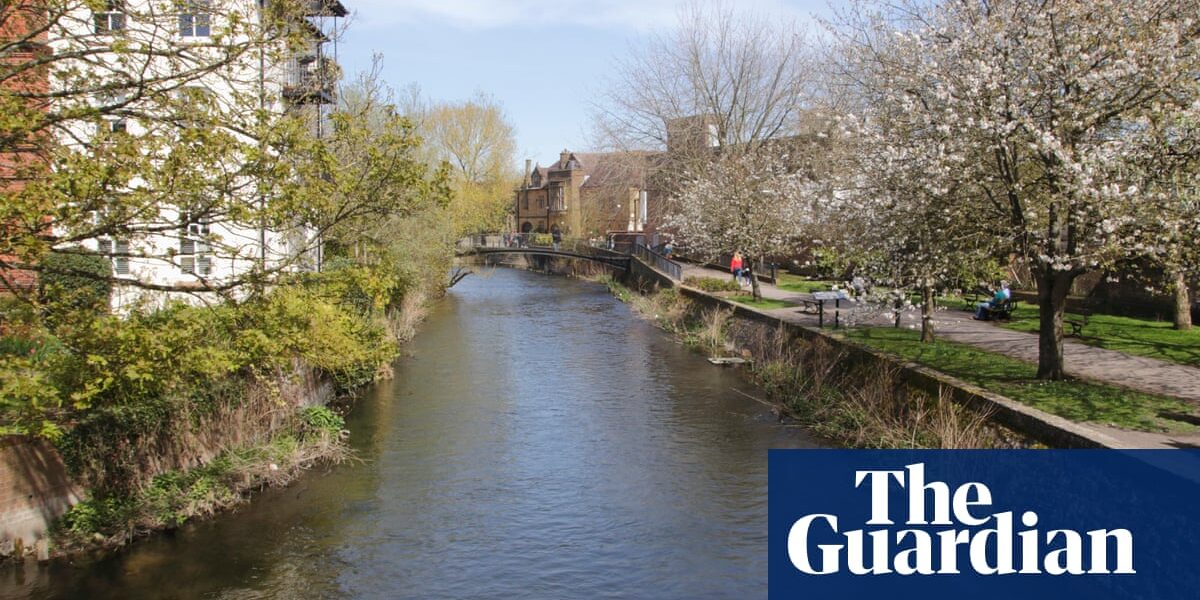A recent report shows that rivers in Britain and Ireland are suffering from severe pollution.

According to a report released on Monday, the rivers in Britain and Ireland are facing severe pollution, with no waterways in England or Northern Ireland considered to be in good overall condition.
The latest State of Our Rivers report by The Rivers Trust indicates that rivers are currently facing a decline in quality due to pollution from both treated and untreated sewage, as well as agricultural and industrial runoff.
In 2022, data from the WFD (a European Union regulation) showed that 54% of rivers in England did not meet chemical and ecological standards due to pollution from treated and untreated sewage released by the water industry.
The pollution from agricultural activities is responsible for 62% of waterways in England not meeting the required standards for chemical and biological contamination. Additionally, urban runoff from transportation accounts for 26% of rivers failing to achieve a good overall status.
The report indicates that none of the rivers in England have good chemical health, as they all have concentrations of toxic chemicals that exceed safe levels. This means that no river in England can be considered to have good overall health based on chemical tests.
Only 15% of rivers meet the standards for good ecological health based on biological indicators. Ecological health evaluates the organisms present in the river and the degree to which it has been altered. The presence, absence, and abundance of species is a reliable measure of overall health.
Likewise, there is no section of river in Northern Ireland that is in a state of good overall condition.
The trust’s chief executive, Mark Lloyd, said: “The State of Our Rivers report is a huge passion project for us, as it’s so important to ensure that science and evidence are at the heart of conversations about how to improve our rivers.
Moreover, it serves a greater purpose by providing public access to data, empowering them to join us in advocating for the necessary changes to protect our environment.
The Rivers Trust is urging the public to pressure politicians to enact measures that will enhance the condition of rivers. According to the trust, having healthy waterways can help reduce the impacts of climate change, promote greater biodiversity in ecosystems, and enhance the overall health and well-being of communities.
The WFD’s primary indicators of pollution are widely acknowledged as a measure of river quality. However, the Conservative government has stated their intention to deviate from these EU monitoring standards due to Brexit.
According to a report by the Rivers Trust, during the last full water assessments in 2019, only 14% of rivers were found to be in good ecological health and none met the standards for good chemical health. Unfortunately, there has been minimal to no improvement since then and the state of rivers remains dire.
The latest report stated that even crystal-clear waters may harbor microplastics, industrial chemicals, hydrocarbons, fertilizers, pesticides, and pharmaceuticals. It also mentioned that untreated sewage releases negatively affect the majority of our rivers, and even treated wastewater contains a mixture of chemicals such as pharmaceuticals, pesticides from flea treatments for animals, nutrients, and household cleaning products when it is discharged back into our water sources.
“Our rivers are in an unhealthy state, and there has been no improvement since our previous report in 2021.”
Unfortunately, the trust expressed concern that the data collected was not as comprehensive as in 2019, when their previous report was published. This is due to a decrease in river sampling conducted by the Environment Agency.
The report stated that there was a decrease of approximately 6% in the number of river segments receiving health classifications compared to 2019.
The report stated that toxins, which are widespread, long-lasting, and have a tendency to build up in living organisms, were present in all areas due to chemical pollution.
According to the statement, chemicals can remain present in freshwater ecosystems for many years. Therefore, even though there was no recent testing, it is likely that the water quality in our rivers is still very low. Our examination of government data revealed that despite being prohibited for 15 years, the harmful chemical PFOS is still detected in freshwater fish in England at levels that are over 300 times higher than what is considered safe for aquatic organisms.
The trust stated that additional data is necessary in order to fully comprehend the extent of the issues and implement strategies to improve river conditions. However, the government, after deviating from the WFD, has announced that it has no plans to release reports on river quality until 2025.
In England, the majority (85%) of river segments do not meet satisfactory ecological standards, with only a small percentage (15%) achieving good or above ecological health.
Out of the 3,553 river sections that were evaluated by the trust, 151 showed improvement and reached a higher ecological standard, while 158 declined.
According to the 2021 WFD assessments, 44% of river stretches in Wales have achieved a good overall status. However, Afonydd Cymru, the Welsh counterpart of the Rivers Trust, has raised concerns about the methods used for WFD assessments in the country. They believe that discrepancies in waterbody status are primarily due to variations in monitoring and reporting by Natural Resources Wales, rather than actual improvements in the environment.
The percentage of river sections in Scotland that are considered to be in good or better condition has increased to 57.2%, according to the classifications made by the Scottish Environmental Protection Agency in 2022. This shows an improvement of 23 river sections in overall condition (achieving good status or better) since 2020.
In Ireland, more than half of the rivers have achieved a good or high ecological status, showing improvement. However, out of the 193 rivers surveyed, only 40% met the standards for chemicals, while the remaining 60% failed.
Source: theguardian.com



